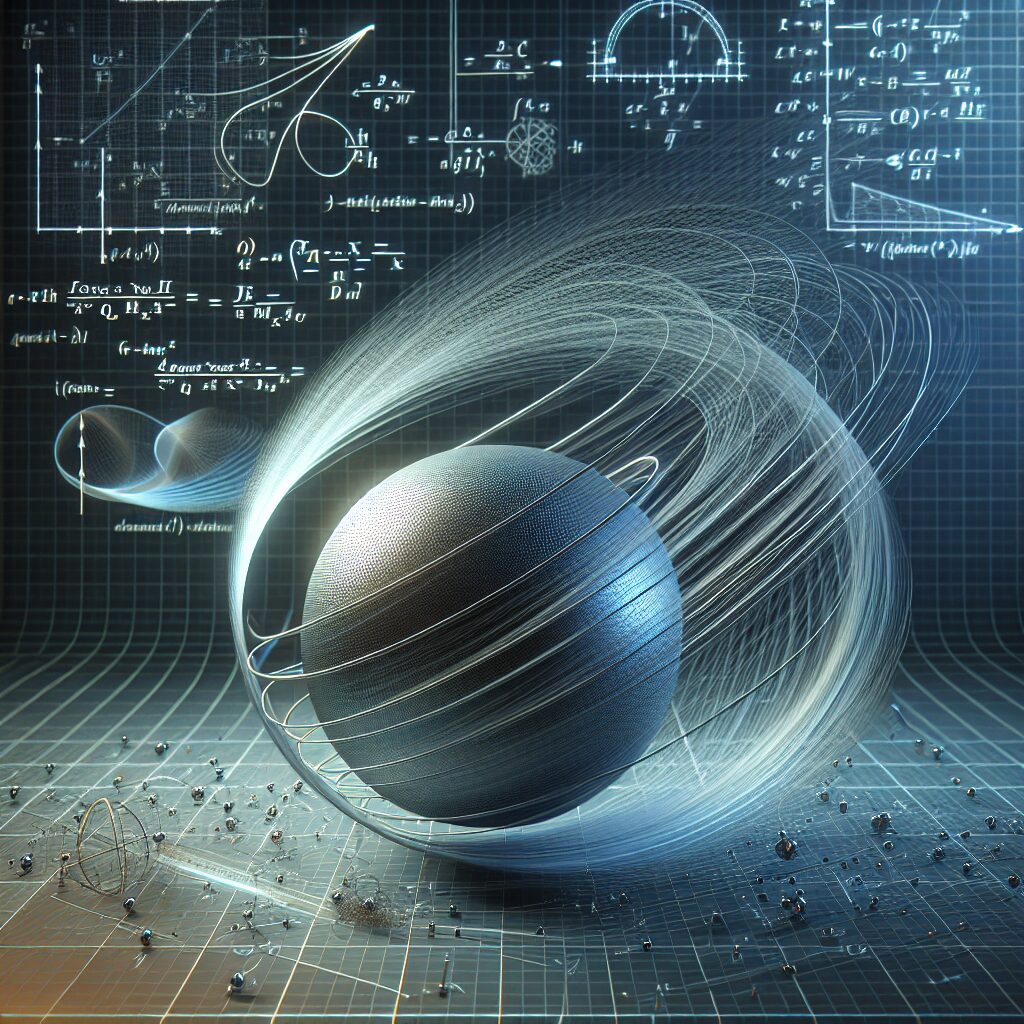Mathematical Models for Understanding Ball Dynamics play a significant role in various fields including physics, sports science, and engineering. These models offer a systematic approach to analyzing the movement, behavior, and interactions of balls in different contexts. By applying mathematical principles and formulas, researchers and professionals can gain valuable insights into the fundamental mechanics underlying ball dynamics.
One unique feature of these models is their ability to predict the trajectory of a ball based on its initial conditions and external factors such as forces and constraints. This predictive capability is particularly valuable in sports analysis, where understanding the flight path of a ball can help athletes optimize their performance and strategize their actions. Moreover, mathematical models enable engineers to design better ball-related products, such as more aerodynamic sports balls or more efficient bearing systems. These models provide a solid foundation for studying and manipulating ball dynamics across a range of disciplines.
Now, let’s delve into the key takeaways of this article. First, we will explore how mathematical models are used to analyze the motion of balls and predict their trajectories. We will then discuss the applications of these models in sports science, physics research, and engineering. Next, we will examine some real-life examples where mathematical models have played a crucial role in understanding ball dynamics. Finally, we will conclude with the potential future advancements in this field and the ongoing research efforts aimed at refining these models. So, let’s embark on this fascinating journey into the world of mathematical models for understanding ball dynamics.
Key Takeaways
1. Mathematical models provide valuable insights into the complex dynamics of ball movement in various sports, helping to understand factors like trajectory, spin, and impact forces.
2. The use of mathematical models allows for the prediction and analysis of ball behavior, aiding coaches and athletes in training, strategy development, and performance optimization.
3. Several key factors influence ball dynamics, including initial conditions such as ball speed and angle of launch, physical properties like ball weight and size, as well as environmental factors such as air resistance and surface conditions.
4. By employing mathematical models, researchers can investigate and better understand the impact of different variables on ball dynamics, leading to improved training techniques, equipment design, and overall game strategies.
5. Mathematical modeling not only benefits sports scientists and athletes but also contributes to practical applications in other fields, such as robotics, physics, and engineering, where the principles of ball dynamics can be applied to a wide range of problems and innovations.
What are the Best Mathematical Models for Understanding Ball Dynamics?
Newton’s Laws: The Foundation of Ball Dynamics
Newton’s laws of motion provide essential mathematical models for understanding ball dynamics. These laws describe how a ball will move and react under different forces and conditions:
- Newton’s First Law (Law of Inertia): A ball at rest will remain at rest, and a ball in motion will continue to move with the same speed and direction, unless acted upon by an external force.
- Newton’s Second Law (Law of Acceleration): The acceleration of a ball is directly proportional to the force applied to it and inversely proportional to its mass.
- Newton’s Third Law (Law of Action-Reaction): For every action, there is an equal and opposite reaction. When a ball pushes against a surface or object, it experiences an equal and opposite force in return.
Air Resistance and Drag Coefficients
When a ball moves through the air, it encounters air resistance, which affects its trajectory and speed. To accurately model ball dynamics, it is crucial to consider the air resistance and the drag coefficient of the ball:
- Air Resistance: Air resistance is the force that opposes the motion of an object through the air. It depends on the shape, size, and velocity of the ball.
- Drag Coefficient: The drag coefficient represents the relationship between the drag force and the velocity of the ball. It varies depending on the ball’s shape and surface roughness.
Momentum and Elastic Collisions
Momentum plays a significant role in understanding ball dynamics, especially during collisions. Consider the following concepts:
- Momentum: Momentum is a measure of an object’s motion and is defined as the product of its mass and velocity. In ball dynamics, changes in momentum during collisions determine the resulting motion.
- Elastic Collisions: In elastic collisions, both momentum and kinetic energy are conserved. The mathematical models for understanding ball dynamics during collisions involve calculating the momentum and applying the law of conservation of momentum.
Friction and Rolling Resistance
Frictional forces significantly impact the movement of balls, especially in contact with surfaces. Additionally, rolling resistance affects the ball’s motion when it rolls on a surface. Consider the following aspects:
- Friction: Friction opposes the relative motion between two surfaces in contact. In ball dynamics, it affects the rolling, sliding, or spinning motion of the ball.
- Rolling Resistance: Rolling resistance refers to the force that opposes the rolling motion of a ball on a surface. It depends on various factors, including the ball’s surface material and the nature of the surface it rolls on.
Guides for Modeling Ball Dynamics
- Use appropriate mathematical equations: Familiarize yourself with the mathematical equations governing ball dynamics, such as those derived from Newton’s laws of motion or principles of conservation.
- Consider different physical factors: Take into account the effects of air resistance, drag coefficients, friction, and rolling resistance when modeling ball dynamics.
- Perform real-world experiments: Collect data by conducting experiments with different balls in controlled environments. Use this empirical data to refine and validate your mathematical models.
- Utilize computational simulations: Employ computer simulations and numerical methods to solve complex equations and simulate ball dynamics under different scenarios.
- Collaborate with experts: Seek guidance from professionals in the field of physics, engineering, or sports science to gain insights and refine your mathematical models.
Frequently Asked Questions
1. What is the significance of mathematical models in understanding ball dynamics?
Mathematical models play a crucial role in understanding ball dynamics as they provide a systematic approach to analyze and predict the behavior of balls in various scenarios. These models help us understand how factors such as velocity, angle of impact, friction, and air resistance affect the trajectory and motion of a ball.
2. Can mathematical models accurately predict the behavior of all types of balls?
While mathematical models can provide valuable insights into the dynamics of various balls, it is important to note that these models are simplifications of real-world phenomena. Factors such as irregularities in the ball’s surface, wind conditions, and interactions with other objects may introduce uncertainties. Thus, while mathematical models can offer reasonable predictions, the actual behavior of a ball may deviate from these models.
3. How are mathematical models for ball dynamics created?
Mathematical models for ball dynamics are typically created using principles from physics, such as Newton’s laws of motion. These models involve solving differential equations that describe the forces acting on the ball and its resulting motion. Through experiments and data analysis, parameters in the models are adjusted to make them more accurate in predicting real-world ball behavior.
4. Are there different mathematical models for different types of balls?
Yes, there are different mathematical models for different types of balls. The behavior of a basketball, for example, may be modeled differently than that of a soccer ball or a golf ball due to variations in their size, shape, surface characteristics, and the way they interact with their respective playing environments. Hence, it is essential to use appropriate models specific to the type of ball being analyzed.
5. How can mathematical models be used to improve sports performance?
Mathematical models can be used to optimize sports performance by providing insights into the ideal parameters for ball control, aiming, and shot selection. By understanding the dynamics of a ball, athletes and coaches can make more informed decisions, develop efficient training strategies, and ultimately improve performance through an enhanced understanding of the calculations involved in ball dynamics.
6. Are there limitations to mathematical models for ball dynamics?
Yes, there are certain limitations to mathematical models for ball dynamics. These models may not account for all external factors, which can lead to discrepancies between predicted and actual ball behavior. Additionally, models often assume ideal conditions, overlooking factors like surface imperfections, temperature, and humidity, which can affect the ball’s performance. Therefore, it is important to combine mathematical models with real-world experimentation and observations for a comprehensive understanding of ball dynamics.
7. Can mathematical models provide insights into ball spin and curve?
Yes, mathematical models can provide valuable insights into ball spin and curve. By considering the forces involved, such as the Magnus effect (caused by spin), mathematical models can accurately predict how a ball will curve or deviate from a straight path. These models are particularly useful in sports like baseball, tennis, and soccer, where spin and curve play significant roles in gameplay and strategy.
8. How can mathematical models aid in designing optimal ball trajectories?
Mathematical models can aid in designing optimal ball trajectories by allowing us to analyze various factors and their effects on the ball’s trajectory. By adjusting parameters such as launch angle, initial velocity, and spin, these models can help determine the most advantageous trajectory for achieving desired outcomes, whether it be maximizing a golf shot’s distance or achieving pinpoint accuracy in a basketball shot.
9. Can mathematical models help in ball collision analysis?
Yes, mathematical models are instrumental in ball collision analysis. By considering the conservation of momentum and energy, these models can accurately predict the outcomes of ball-to-ball or ball-to-surface collisions. This information is crucial in sports where colliding balls, such as billiards or pool, play a significant role, as it enables players to strategize and predict the paths and velocities of the balls involved.
10. Are mathematical models for ball dynamics applicable in other fields apart from sports?
Yes, mathematical models for ball dynamics have applications beyond sports. They are also used in fields such as robotics, physics research, engineering, and even entertainment industries like computer graphics and animation. These models help simulate the movement and interaction of objects resembling balls in various contexts and contribute to advancements in these fields.
Final Thoughts
Mathematical models for understanding ball dynamics offer immense value in multiple domains. By formulating and analyzing these models, we can gain a deeper understanding of how balls behave and interact with their surroundings. This knowledge is not just limited to sports but extends to other disciplines like robotics, manufacturing, and entertainment. While mathematical models have their limitations, they provide a fundamental framework to study and predict ball behavior, ultimately leading to advancements in various industries.
As technologies continue to evolve and computational power increases, we can expect further refinements and improvements in mathematical models for understanding ball dynamics. With advanced simulations and real-time data analysis, these models will have an even greater influence on sports performance, design optimization, and creating realistic virtual environments. Continued research in this field will undoubtedly enhance our understanding of ball dynamics, benefitting a wide array of applications now and in the future.




